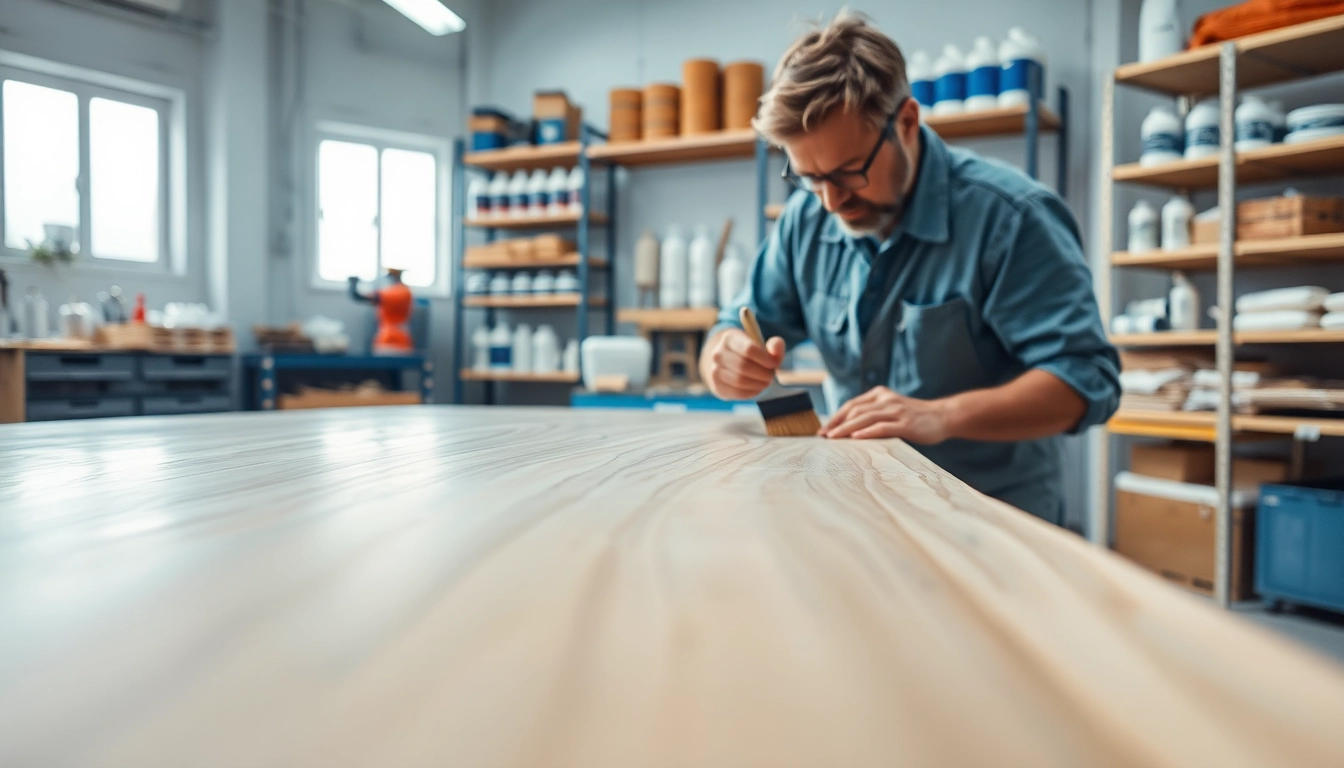Understanding Laminating Resin
What is Laminating Resin?
Laminating resin is a type of resin primarily used in the production of composite materials. This synthetic polymer serves a vital role in ensuring the structural integrity and durability of composite products such as fiberglass. The resin serves as an adhesive, binding layers of materials together to form a solid structure, exhibiting excellent mechanical and thermal properties. It is predominantly utilized in various industries including marine, automotive, and construction, where high-strength components are essential.
The composition of laminating resin typically includes unsaturated polyester or epoxy components, which, when combined with a hardener, undergo significant chemical reactions to form a solid mass. This transformation is critical for achieving the desired strength and durability. A well-known application of laminating resin is the production of boats, where it adheres fiberglass to the hull structure, ensuring long-lasting performance and resilience against environmental factors.
Types of Laminating Resin
There are primarily two types of laminating resin, each suited to specific applications and conditions: polyester and epoxy resin.
- Polyester Laminating Resin: This type is widely used due to its cost-effectiveness and ease of use. Polyester laminating resin is characterized by its quick curing process and resistance to UV radiation and moisture. It adheres well to fiberglass, making it the go-to option for marine applications.
- Epoxy Laminating Resin: While generally more expensive than polyester resin, epoxy laminating resin offers superior adhesion and thermal resistance. It is ideal for applications requiring strong bonds and enhanced durability, particularly in environments where chemical resistance is crucial.
Applications of Laminating Resin
Laminating resin serves a multitude of purposes across various industries:
- Marine Industry: In the marine sector, laminating resin is essential for constructing hulls and other components. Its water-resistant properties are crucial for maintaining integrity in harsh marine environments.
- Aerospace: The aerospace industry utilizes laminating resin for its lightweight and strength properties, especially in the production of fuselages and wings of aircraft.
- Automotive: Used in manufacturing body panels and structural components, laminating resin contributes to weight reduction and increased fuel efficiency in modern vehicles.
- Construction: Laminating resin is applied in high-performance structural elements, enhancing the durability of building materials like composite beams and panels.
Benefits of Using Laminating Resin
Strength and Durability
One of the most significant advantages of laminating resin is the strength it imparts to composite materials. When properly cured, laminating resin forms a rigid structure that is capable of withstanding significant stress and impact. This strength is essential for applications ranging from marine vessels to automotive components, where safety and performance are paramount.
Water Resistance
Laminating resin’s inherent properties make it highly resistant to water, which is a critical requirement for many applications, particularly in marine environments. The protective barrier created by laminating resin prevents water ingress, mildew, and corrosion, thus extending the lifespan of structures and materials.
Cost-Effectiveness
When compared to traditional materials like metals or solid wood, laminating resin offers a more economical solution without compromising strength or performance. The process of using laminating resin can result in less waste, shorter production times, and lower material costs, making it a favored choice for manufacturers looking to cut expenses while maintaining quality.
Choosing the Right Laminating Resin
Factors to Consider
Selecting the appropriate laminating resin involves considering various factors such as the application’s specific requirements, cost, and the environmental conditions to which the final product will be exposed. Key considerations include:
- Temperature Resistance: For applications subjected to extreme temperatures, choose a resin known for its thermal stability.
- Chemical Resistance: If the composite will face harsh chemicals, epoxy resins tend to provide better resistance than polyester resins.
- Curing Time: For rapid production needs, opt for laminating resins with fast curing characteristics.
Comparing Laminating Resin Types
When examining polyester versus epoxy laminating resins, it’s crucial to consider the advantages each type offers:
- Polyester resin is easier to work with and cures quickly but does not provide the same level of adhesion or chemical resistance as epoxy.
- Epoxy resin, while more complex to apply, offers superior bonding capabilities and is often utilized in advanced applications requiring exceptional performance.
Environmental Impact
As awareness of environmental issues grows, the sustainability of laminating resin becomes increasingly important. Manufacturers are now focusing on creating resins with lower volatile organic compound (VOC) emissions and those derived from renewable resources. When selecting a laminating resin, consider its environmental footprint, including manufacturing processes and end-of-life options.
Techniques for Applying Laminating Resin
Preparation Steps
Before applying laminating resin, thorough preparation is essential for ensuring optimal adhesion and performance:
- Surface Cleaning: The substrate must be free from dust, oil, and any contaminants that could hinder adhesion.
- Surface Roughening: Roughening the surface through sanding can enhance bonding and ensure the resin adheres effectively.
- Mixing: Ensure the resin and hardener components are precisely measured and well-mixed to achieve the proper chemical reaction.
Application Methods
There are multiple methods for applying laminating resin, which can include:
- Brush Application: A common method for smaller projects, using a brush allows for detailed control.
- Roller Application: Efficient for larger surfaces, rollers can quickly spread resin over vast areas.
- Spray Application: Ideal for achieving a smooth finish on large or complex shapes, spray application reduces the risk of bubbles and allows for even coverage.
Curing and Finishing
After application, the curing process is crucial. Depending on the type of resin used, the curing process can vary. Polyester resin typically cures at room temperature, but can be accelerated with heat. In contrast, epoxy resin might require a longer time to cure fully and could benefit from a controlled environment.
Once cured, the surface can be sanded, painted, or coated with a finisher for aesthetic appeal and additional protection against environmental factors.
Common Challenges and Solutions
Pitting and Bubbles
Pitting and bubbles in cured laminating resin are common issues that can affect the final appearance and strength of the composite. These issues can arise from improper mixing or the presence of moisture and air during application. To minimize these occurrences:
- Ensure thorough mixing of the resin and hardener.
- Apply resin in a well-ventilated area to prevent moisture from interfering with curing.
- Utilize vacuum bagging techniques to eliminate air during the curing process.
Surface Adhesion Issues
Adhesion failures can occur due to inadequate surface preparation, incorrect resin choice, or improper application techniques. To avoid these pitfalls:
- Thoroughly clean and roughen surfaces before applying resin.
- Choose the correct type of resin based on the materials being bonded and the environmental conditions.
- Monitor the curing conditions to ensure optimal bonding occurs.
Storage and Shelf Life
Proper storage of laminating resin is essential to maintain its effectiveness. Each resin type has specific storage conditions, often requiring a cool, dry place away from direct sunlight. Always check the shelf life and use the material within the recommended timeframe to optimize performance.



